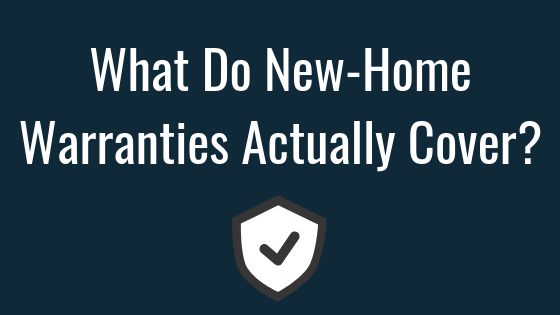Housekeeping is hard, especially when there are things like work, school, family time, and fun to be had. Some people take joy from completing household tasks, but for most of us, housework is a chore. We try to use shortcuts to save time, but sometimes we end up just creating more work for ourselves. In actuality, breaking just a few bad habits can save a lot of time and elbow grease. Here are some bad housekeeping habits to break up with now and help make housework a little easier.
Bad Habit #1: Getting Distracted
The number one issue many people have with cleaning and organization is getting distracted and not finishing the job. If you want to make cleaning your house easier and faster, you need to concentrate on finishing a task before moving on to something else. Let’s say you’re folding laundry, and you realize just how many t-shirts you own. You decide to go to your t-shirt drawer and start purging your collection to create more space. Then you move on to purging the closet, completely forgetting about the mountain of clean, unfolded laundry on the bed. Instead, finish folding and putting away your clothes. Then, if you have the time and motivation afterward, go ahead and do that purge.
Bad Habit #2: Ignoring Papers and Periodicals
Your email inbox probably fills up faster than your actual mailbox,but somehow junk mail and other papers still have a way of accumulating and taking over counters and tabletops. Bills, school papers, cards, magazines, newspapers…whatever the pile is made up of, it needs to be taken care of. As tempting as it is to just toss it all in the recycle bin, DON’T. You could be throwing away an important document. Instead, set aside a chunk of time to go through your mountain of papers. Make a stack to file, a stack to shred, and a stack to recycle. Designate a line-of-sight spot for all incoming papers. Go through them once a week and shred, file, or toss accordingly.
Bad Habit #3: Post-Shower Pile-Up
Not a fan of scrubbing the bathroom? Neither are we. Hate doing laundry? Us too. Good thing we can break one simple habit to help mitigate the amount of time we spend cleaning the bathroom. After each shower, simply close the shower curtain. This will help it dry faster and discourage mildew growth. Also make sure to hang your wet or damp towel so you can get another use or two out of it before tossing it in the hamper.
Bad Habit #4: Forgetting to Clean Your Cleaning Tools
Washing dishes with a bacteria-riddled sponge. Using a vacuum cleaner that hasn’t been emptied in who knows how long. Washing clothes in a washing machine that has a mildewy odor. They all defeat the purpose of cleaning in the first place. You can’t expect dirty tools to be effective in cleaning up. Be sure to clean or replace them after each use or as needed.
Bad Habit #5: Letting Dirty Dishes Fester
Leaving dirty dishes in the sink creates a veritable buffet for pests, a perfect breeding ground for bacteria, and a gross odor that wafts throughout your house. In order to break this habit, you’re going to have to create new ones. First, empty the dishwasher every time it’s finished. We’ve all been guilty of using the dishwasher as storage from time to time, but it’s really not a great idea to leave your clean dishes in the warm, moist environment to invite mildew and even bugs. Plus when you have an empty dishwasher just waiting to be filled again, it won’t take any more effort to put your dirty bowl there than it will to put it in the sink.
Bad Habit #6: Stockpiling Dirty Laundry
Laundry day will be so much easier if you don’t allow your hampers and baskets to overflow. Instead of waiting for it to amass so you can do a full load, think about doing smaller loads throughout the week. It might sound like a waste of water and energy to do it this way, but most washers nowadays have settings for smaller, quicker, and more efficient loads of laundry. You’ll be more likely to fold and put away smaller loads of laundry than one giant one on your designated (and dreaded) laundry day.
Bad Habit #7: Disinfectant Wipe Abuse
Disposable disinfecting wipes like are a godsend for those times when you need to do a quick cleanup. What you don’t want to do, however, is use one disinfectant wipe to clean multiple areas. If you use one to wipe down the bathroom counters and then move on to the toilet with the same wipe, all you’re doing is spreading bacteria.
Bad Habit #8: Wearing Shoes in the House
Make a new rule that everyone must remove outside shoes as soon as they step through the front door. It’s easy to forget the amount of germs and bacteria and bits that can amass on the soles of our shoes. After all, how often do we really look at them? Place a basket, bin, or tray inside the front door for collecting shoes. Removing shoes each time you come inside will help save a lot of time and energy spent on vacuuming and mopping floors. (It also helps ensure certain family members and friends don’t put their shoes on the furniture!)
Bad Habit #9: Forgetting to Clean Out the Fridge
We get it. Life’s busy. It’s easy to forget to clear the fridge of old food and drinks. After all, how much time do you spend looking inside your fridge and freezer? Out of sight, out of mind, right? Well, it’s time to make a point of cleaning out the refrigerator weekly. Toss any leftovers that haven’t been eaten after a couple of days. Even though it’s refrigerated, food that remains untouched and improperly stored grows mold and bacteria and causes bigger messes than necessary.
Bad Habit #10: Saving the Dusting for Last
Where do you think that dust ends up when you wipe down dirty surfaces? If you think every bit is trapped the cloth or duster you’re using, you’re wrong. Dust particles fall to the floor or float through the air and land on other surfaces you might have already cleaned. So do yourself a favor and clean top to bottom, completing the dusting first. Any dust remnants can be cleaned up when you vacuum or sweep and mop.
Bad Habit #11: Not Making the Bed
It may seem like such a small thing, but making your bed really sets the tone for the day. It can also make the bedroom look cleaner by half with just a few seconds of effort. To make it really easy on yourself, use non-fussy bedding that’s easily pulled up and situated, and keep things like throw pillows and afghans to a minimum.
Bad Habit #12: Skipping the Directions
If you think you can save time by not reading the directions on things like cleaning products, think again. You might actually cause yourself to spend more time cleaning up the mess you made by using a product incorrectly. For instance, some cleaners require a few minutes to sit, soak, and do their thing before you’re supposed to wipe them up. If you spray the cleaner on and get down to business with the scrubbing right away, you’re just creating more work for yourself. If you’d read the instructions, you would’ve known to spray the cleaner on, wait ten minutes, and then wipe it all away with much less effort.











